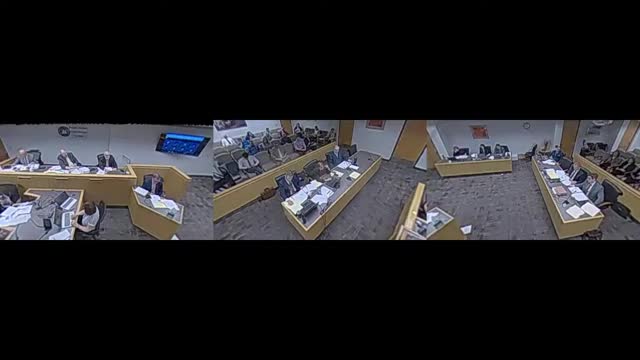Expert witnesses debate utility negligence in wildfire claims evaluation
March 23, 2025 | Utah Public Service Commission, Utah Subcommittees, Commissions and Task Forces, Utah Legislative Branch, Utah
This article was created by AI summarizing key points discussed. AI makes mistakes, so for full details and context, please refer to the video of the full meeting. Please report any errors so we can fix them. Report an error »

The Phase III Hearing on DAO Docket Issues regarding RMP's Rate Case took place in Utah on March 23, 2025, focusing on the complexities of utility negligence in wildfire incidents. The discussions centered around the attribution of negligence to utility companies in cases where wildfires were linked to their equipment, particularly in scenarios involving natural causes like high winds or animal interactions.
Key testimonies highlighted the nuanced nature of negligence assessments. Experts debated whether a utility could be deemed negligent if a fire was ignited by external factors, such as high winds causing vegetation to contact power lines or animals interacting with electrical equipment. One expert clarified that negligence is not always present, stating, "They may or may not be negligent," depending on the circumstances surrounding each incident.
The analysis of wildfire claims revealed that while some incidents resulted in liability claims being paid, this did not automatically equate to a finding of negligence. For instance, a fire caused by a tree falling on a power line was classified as having "no negligence present," while another incident involving downed power lines was deemed "100% negligent." The expert emphasized that the determination of negligence is complex and relies on various factors, including the nature of the claims and the context of the incidents.
The hearing also addressed the methodology used to assess negligence in wildfire claims. The expert's approach involved categorizing claims based on whether they were associated with human activity, which could indicate negligence. However, the discussions revealed inconsistencies in how negligence was attributed across different cases, raising questions about the reliability of the assessments.
Overall, the hearing underscored the challenges in determining utility negligence in wildfire incidents, particularly when multiple factors contribute to the cause of a fire. The outcomes of this hearing could have significant implications for future utility regulations and insurance premium assessments related to wildfire liabilities. Further analysis and clarity on the definitions of negligence in these contexts will be crucial as the discussions continue.
Key testimonies highlighted the nuanced nature of negligence assessments. Experts debated whether a utility could be deemed negligent if a fire was ignited by external factors, such as high winds causing vegetation to contact power lines or animals interacting with electrical equipment. One expert clarified that negligence is not always present, stating, "They may or may not be negligent," depending on the circumstances surrounding each incident.
The analysis of wildfire claims revealed that while some incidents resulted in liability claims being paid, this did not automatically equate to a finding of negligence. For instance, a fire caused by a tree falling on a power line was classified as having "no negligence present," while another incident involving downed power lines was deemed "100% negligent." The expert emphasized that the determination of negligence is complex and relies on various factors, including the nature of the claims and the context of the incidents.
The hearing also addressed the methodology used to assess negligence in wildfire claims. The expert's approach involved categorizing claims based on whether they were associated with human activity, which could indicate negligence. However, the discussions revealed inconsistencies in how negligence was attributed across different cases, raising questions about the reliability of the assessments.
Overall, the hearing underscored the challenges in determining utility negligence in wildfire incidents, particularly when multiple factors contribute to the cause of a fire. The outcomes of this hearing could have significant implications for future utility regulations and insurance premium assessments related to wildfire liabilities. Further analysis and clarity on the definitions of negligence in these contexts will be crucial as the discussions continue.
View full meeting
This article is based on a recent meeting—watch the full video and explore the complete transcript for deeper insights into the discussion.
View full meeting

